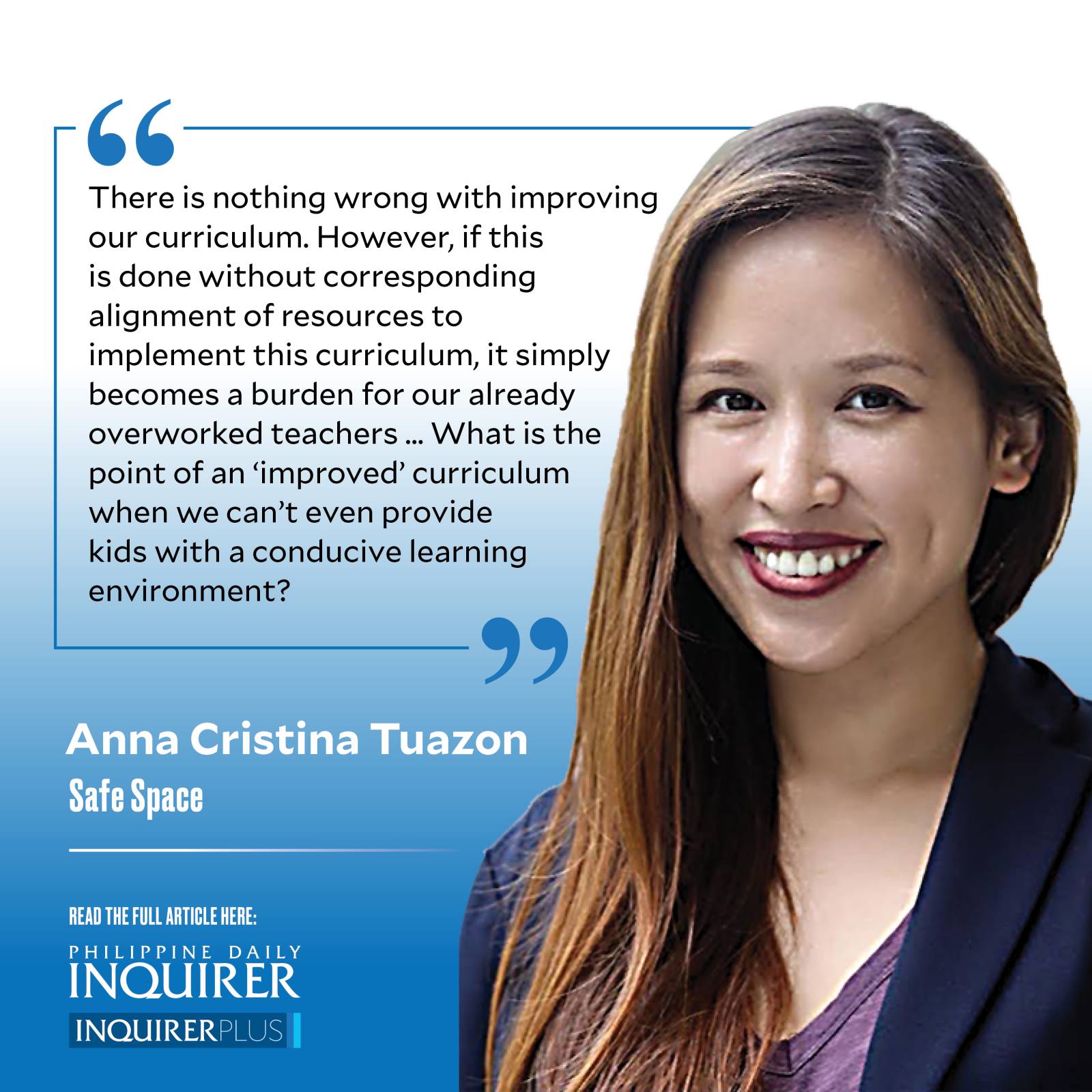Curriculum fatigue

The craft of curricula-making has become increasingly complex—and esoteric. The Department of Education recently released their draft new curricula for K-to-12 for the general public to review. It is a product of an ambitious overhaul with numerous technical committees formed by the Second Congressional Commission on Education. I was first alerted to the new drafts when they proposed to merge Araling Panlipunan with Music, Arts, Physical Education, and Health (Mapeh), turning it into Sibika, Kultura, Kasaysayan, at Kagalingang Pangkatawan (Sikap), for Kinder to Grade 3. I was already skeptical when Mapeh was first merged and now they’re making an even stranger Frankenstein of a class. Just because these are multidisciplinary fields do not mean they should be merged. When a subject is considered multidisciplinary, like in social sciences, it means that there are multiple approaches and theories to be considered. If anything, multidisciplinary subjects require more time, not less. A perusal of the draft Sikap curriculum shows that they have turned music, arts, and physical education into mere modalities of learning instead of subjects of learning. Full exploration of Philippine culture and history have been erased in favor of contextless themes of self, family, and community. It doesn’t seem like any subject within Sikap has benefited from this merger.
The proponents admit that this merger was really done in favor of the other subjects they consider “foundational” such as reading comprehension. They claim that merging these classes will lead to a decluttering of the curriculum. However, students are still left with 10 to 11 subjects overall. Their drafts also do not provide a suggested overall timetable to see how many subjects a student will typically take in a day or how often they will take any particular subject. I had to contact my sister-in-law, an education specialist, to confirm if I understood the drafts right since it was so difficult for me to understand what a typical school day would be like for a student under this new curriculum.
And therein lies my main frustration: We have spent much energy—and money—on crafting a complex curriculum that will probably be incomprehensible to the average teacher. Experts love their framework (the more concentric circles, the better!). What they have failed to bridge is the wide gap between curriculum made by top management and the realities of teaching on the ground.
Whenever I have the opportunity to consult for schools regarding mental health policies and strategies, I know that the last thing teachers should feel is that I’m giving them more work. If they perceive mental health care as another thing on their long list of tasks, they will not implement it. Instead, I try to see first what is already on their plate and see if we can come up with ways that will make their work easier AND more caring at the same time. When I do ask them what usually gets in the way of doing quality work, they cite two things: the rigid jampacked curriculum and administrative paperwork.
Essentially, the more micromanaged the curriculum, the less flexibility and creativity there is for the teacher. If a curriculum insists on demanding a long list of competencies per class period, the less likely teachers can be responsive to the individual and varied needs of their students. This reminds me of an episode of “Abbott Elementary” season 2 where the new public school teacher Gregory tried to work out how to fit all of the school’s district’s curriculum into their lesson plans only to realize that “they were set up to fail” because it was impossible to implement unless planning to the minutes and seconds. What if a kid has difficulty grasping a concept—will the teacher have enough time and space to help that student out or is the teacher pressured to forge on ahead because the lesson plan must push through? What about class suspensions—does the curriculum have enough wiggle room whenever there aren’t enough school days to implement their tight schedule?
There is nothing wrong with improving our curriculum. However, if this is done without corresponding alignment of resources to implement this curriculum, it simply becomes a burden for our already overworked teachers. More than curricular change, it is much more urgent to address the resource shortages in our public education system. Fix the teacher-student ratio. Hire more teachers and pay them adequately so they don’t have to resort to second jobs. Good pay attracts good teachers. Fix the classroom shortage so that we can implement full school days. Fix the physical and environmental conditions so that students are more primed to learn. Make sure that students eat well and have space to play. What is the point of an “improved” curriculum when we can’t even provide kids with a conducive learning environment? It seems it is much easier to tell teachers what to do instead of providing teachers what they need.
—————-
aatuazon@up.edu.ph




















